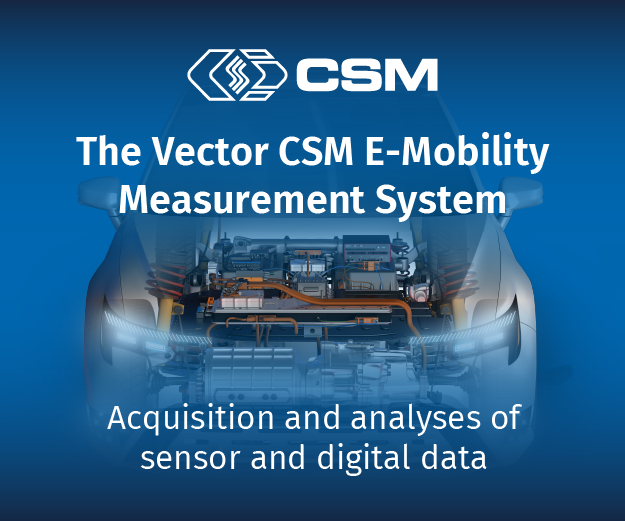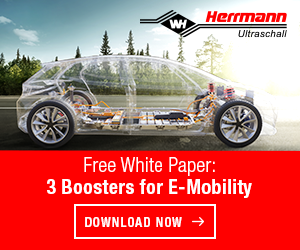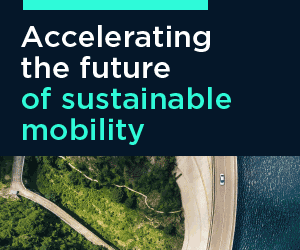In conversation with Tony Persson
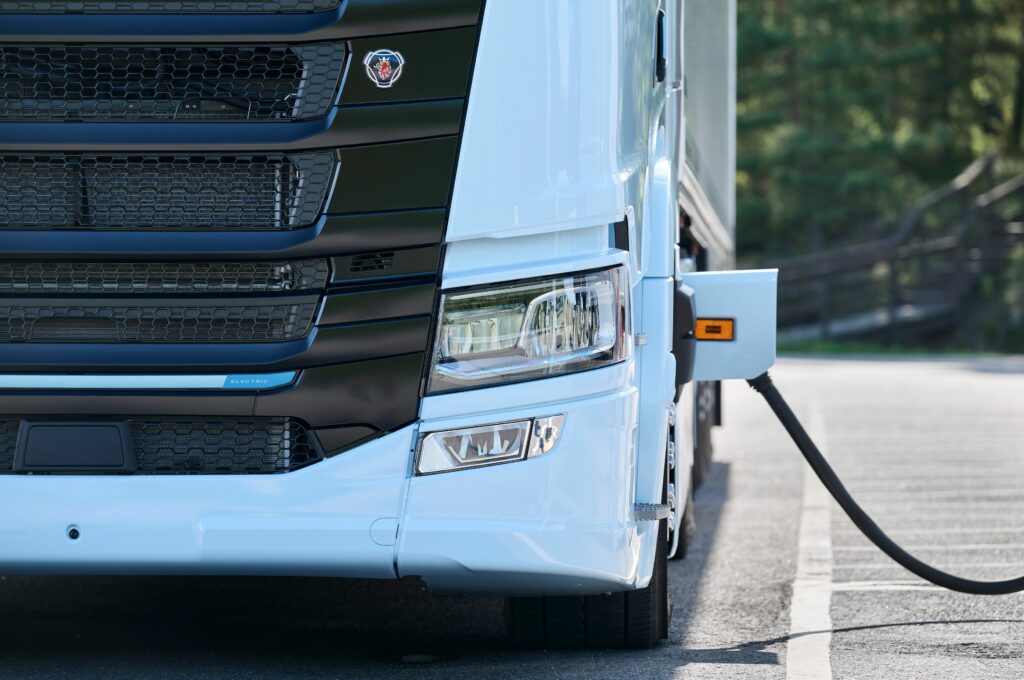
(Images by Dan Boman, courtesy of Scania)
Pushing the limits
Scania AB’s head of battery production Tony Persson explains to Rory Jackson his company’s key role in the development of electric vehicles for demanding applications
The race to electrify road vehicles is bringing with it a race to develop internal competencies in producing key e-mobility technologies, and battery packs frequently make the top of the list. As of mid-2023, around 30 battery factories were planned, being built, or already operational in the US, with around 35 in the EU and several times more in China.
Major OEMs of large commercial vehicles are particularly driven to hone their capabilities in battery engineering and manufacturing as heavy trucks, lorries and buses have unique physical and performance needs. This affects how optimal batteries for such applications must be designed and produced.
As Scania AB’s head of battery production, Tony Persson is closely acquainted with those needs, and with the steps that the Swedish multinational is taking to meet them in its current and coming generations of heavy electric vehicles.
Though Persson had worked in Scania since 2000, starting then as an engineer and project manager, his first experiences with electrification took place between 10-15 years ago, by which time he had become manager for the production of all of Scania’s bus chassis. “We’d only ever produced ICE-powered buses by that time, but someone from Scania R&D came down to the production line and told us that they wanted to produce an electric Scania bus – this was still before Tesla had become a big name with either the Model 3 or its large-scale battery production, so it seemed a bizarre proposition at the time,” Persson recounts.
“But I’m glad we took on that project. Even if it didn’t materialise into a mass-produced electric bus at the time, it was a huge eye-opener for me that heavy commercial vehicles didn’t need to have a conventional drivetrain – that EVs were something that could work safely and efficiently – and that thought has stayed with me since then.”
Though he took a sojourn away from employment in Scania and a foray into independent consulting starting in 2014 (including some indirect work for Scania), that lingering interest in what could have been an electric bus powertrain drove him to return to the Swedish multinational in 2019. That was when the opportunity arose to rejoin as head of battery production at the company’s new battery assembly plant at Södertälje in Stockholm County.
“Since before my university days doing a Masters in Engineering at Lulea in northern Sweden, I’ve always been interested in new areas of technology, particularly when it requires working on new skills and new perspectives; so I applied for the job and I’ve been working to develop Scania’s outsourced production of energy storage systems for electrified trucks and buses ever since.”
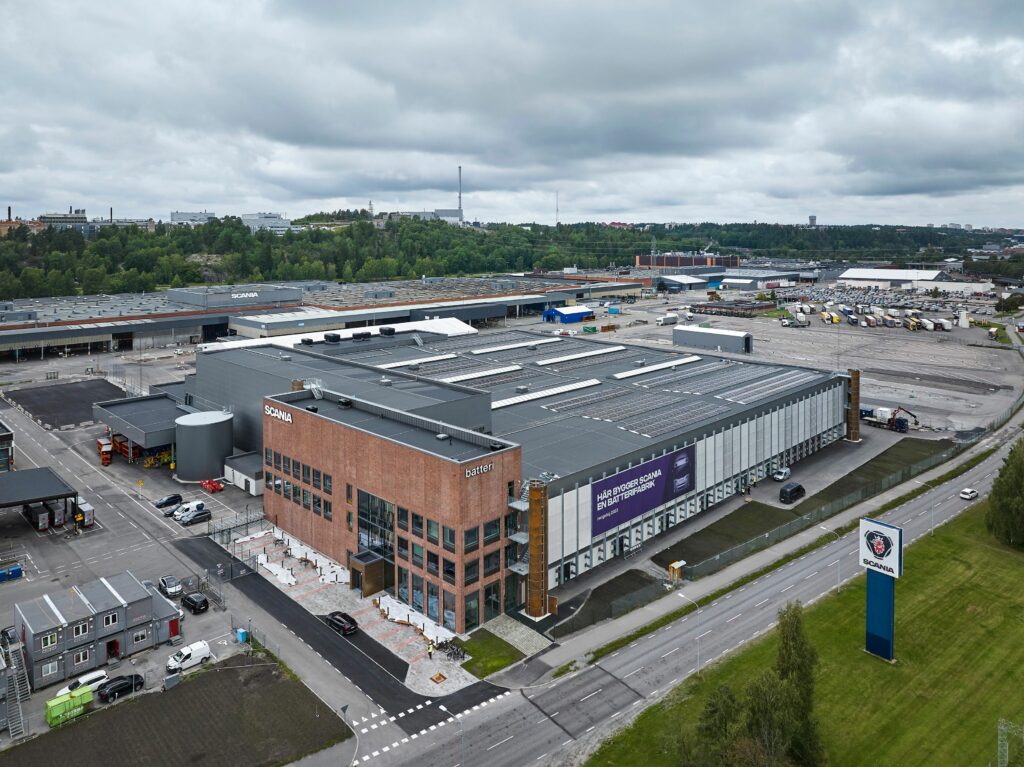
Heavy commercial EVs
As many readers will already be aware, heavy commercial EVs require a number of different parameters in their battery packs compared to those in passenger cars. “For instance, the big one for us is that heavy trucks may be required to operate over 24/7 periods, rather than the regular lengthy rest or slow recharging periods that passenger cars get, between some commuting here and there for much shorter periods than those trucks or even buses work,” Persson notes.
“That has an impact on the kinds of cells and other components you choose, which in turn impacts what aspects of battery production should be performed in-house and which should be outsourced.”
For instance, given the particular skill sets, knowledge and large-scale processes needed to create battery cells, Scania has opted not to research or produce these in-house. Instead it utilises cells from Northvolt, whose head office, laboratories and design facility are conveniently near to Scania’s battery factory in Södertälje.
“By comparison, the processes and skills needed for assembly of battery modules and packs are the same or closely linked in many ways to those already utilised in Scania’s manufacturing centres,” Persson says. “Our design department meanwhile focuses most of their work on optimising and simulating the designs of our modules and packs, but also does some work in designing cells for our use in partnership with Northvolt’s design department.”
For heavy EVs such as those being designed by Scania, Northvolt manufactures and supplies a cell designed with an NMC cathode and in a prismatic format. This is identical to that used in the Audi-Porsche Premium Platform Electric (PPE) modular skateboard powertrain (that system being detailed further in our cover story on p.20).
“The chemistry has been specifically tailored for the endurance and lifetime requirements of heavy vehicles – trucks and buses, specifically – such as meeting a lifetime expectancy of 1.5 million kilometres’ worth of operations, which we regard as an outstanding parameter for Northvolt to have achieved,” Persson comments.
As extra motivation for leveraging Northvolt cells in Scania’s future commercial EVs, Persson makes reference to reports that the Northvolt cell is to be the “greenest” on the market, owing to that company’s use of recycled materials in manufacturing its batteries, as well as its use of clean grid energy to power its production lines. This is thanks to partners and investors such as Vattenfall (which, as discussed in issue 18, Mar/Apr 2023, aims to supply renewable energy to e-mobility and other industries seeking to output products with zero emissions from production through to end-of-life).
A couple of examples of Scania’s new generation of heavy electric vehicles have already been announced. For instance in 2019, Scania announced a battery-electric version of its Citywide city bus, which entered production in 2022. Sized for a seating capacity of 35 passengers and a total capacity of 100 persons, the Citywide BEV can integrate either 8 or 10 packs, for up to 254 kWh or 330 kWh of NMC-based energy storage. Both selections entail an estimated 320 km of range depending on driving, operational and environmental conditions (the 10 pack option likely being recommended for more energy-intensive routes and locations).
The Citywide BEV’s powertrain integrates an oil spray cooled electric motor built for 250 kW of continuous power and 300 kW of peak output, as well as a two-speed gearbox and a braking system combining energy recuperation with electro-pneumatic disc brakes.
Additionally in 2020, the company announced the official market launch of its first battery-electric truck model (simply called Scania BEV) which comes with either a five module battery pack for a capacity of 165 kWh and a range of 130 km, or a nine module pack storing up to 300 kWh and enabling 250 km of driving distance.
The Scania BEV integrates one of its battery modules in what used to be the engine tunnel, with the chassis mounting the remaining four to eight modules, and its electric motor produces up to 230 kW.
“These were vehicles aimed at urban transportations of people and goods, and hence the kinds of distances needed for driving within city limits, but in 2023 we started production of our first regional truck platform for long-haul freight movement, and in Brussels in October we announced our first regional electric bus too,” Persson notes.
Key enhancements for the regional trucks over the urban truck (which comes in both trailer and rigid versions, and up to 64 tonnes gross train weight) include bigger battery packs with up to 624 kWh of energy and so enabling up to 390 km of range between charges depending on driving style, weather, payload and other factors.
“Regulations define our pack engineering and integration philosophy somewhat there: legislation dictates that truck drivers are allowed to drive for four-and-a-half hours, and then they must take a 45 minute break before they can drive four-and-a-half hours again,” Persson says. “That strongly influences boundaries for how much energy you want or need to store on the trucks, as do EU rules saying that you can carry up to 40 t of weight on trucks, or 42 t for EV trucks as it’s estimated that electric truck powertrains are about 2 t heavier than their ICE-based counterparts. So we’ve designed the packs to enable 4.5 hours of driving and then to accept fast-charging to replenish them in 45 minutes.”
They will also feature larger e-motors, which come as part of Scania’s new EM C1-4 powertrain series. These are designed as single permanent magnet synchronous machines combined in a single unit with a four-speed gearbox. Scania has announced the powertrain will be supplied in five different power levels (270, 300, 330, 360, 400 and 450 kW), enabling the regional e-trucks to match the hauling power needed for varying routes and applications.
Similarly, Scania’s regional electric bus will integrate much larger packs than its urban counterpart. One option is to carry four such packs for 416 kWh, with the other being five packs for 520 kWh. Range estimates for either configuration are currently at least 400 km for the lower pack count and at least 500 km for the greater figure; these also come with fast-charging times of approximately 150 minutes and 170 minutes respectively, their packs having been engineered for 200 A DC plug-in rechargers as of writing. Its motor meanwhile will be an e-machine designed for 300 kW peak output and 250 kW of continuous power.
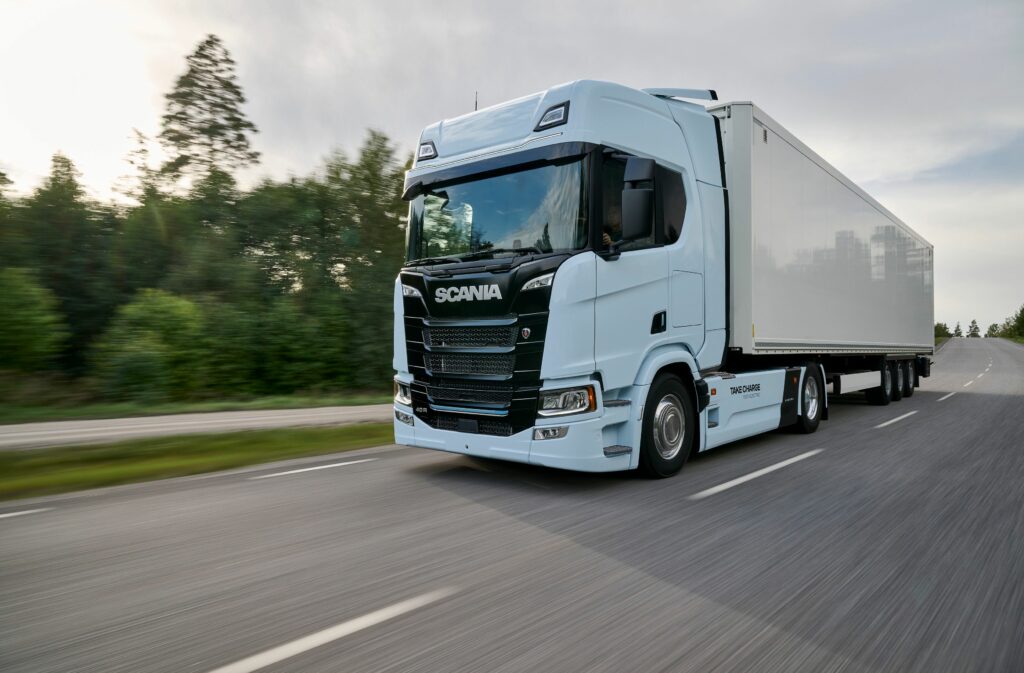
Industry 4.0
Future work towards key enabling technologies for commercial e-mobility such as faster-charging batteries, more energy- and power-efficient drivetrains, and more resource-efficient production is aided by the proximity of Scania’s battery factory to numerous electrification-centric universities.
Persson highlights for instance KTH (the Royal Institute of Technology) in Stockholm: that university’s Integrated Transport Research Lab typically has numerous rolling research projects directly testing how differing configurations of electric vehicles, charging infrastructure, and EV route analytics can result in higher usage of sustainable mobility, lower nationwide emissions and better health of the Swedish population.
“And there are several more; Uppsala University for example also has extensive research programmes within this field, collaborating directly with Northvolt via a Master’s Programme in Battery Technology and Energy Storage. Northvolt helped design that, though we also have connections there,” Persson says.
“And farther afield from just straight e-mobility, there’s a business school in Stockholm which does excellent research in digitalisation. The factory that we’ve built here in Södertälje has all the necessary infrastructure laid for Industry 4.0, which via digitalisation will give us better control over production quality, efficiency, and so on, hence collaborations there are really helpful.”
The factory’s module assembly line is fully automated as a baseline for future industrial technologies, with its present throughput consuming one cell per second. Each of the commercial vehicle-bound cells weighs approximately 2.2 kg, and Persson comments that the ergonomics of handling such large cells requires an automated setup.
“We’ve made sure to install a copious plethora of sensors to ensure we’re always measuring the state of our assembly equipment, of the processes, and of the products, all along the production line,” he says. “And one of the first steps in our facility involves testing all of the battery cells for parameters like performance over temperature, voltage and internal resistance, and we then compare our results in a database with results provided by Northvolt from their own testing processes.
“But really, for me the biggest advantage of having sensors and measurement all over every part of the facility is being able to visualise any step in the production process at any given moment. We routinely set up visualisation layers to suit each operator at every machine on the shop floor, to aid them in monitoring the speed, consistency or health of each process, so they can instantly know how efficiently or safely each tool is operating in real-time.”
On a larger scale, workshop or factory managers use all this data to visualise how well the facility is running, gauging values such as quality yields and machine uptimes, and pinpointing potential bottlenecks where some efficiency might be gained via reworks of or countermeasures within the production line.
Persson additionally notes, “The assembly machines collect data on things like the torque curves of their implements. If machine learning-based AI can autonomously identify where one such curve is starting to shift, then it can trigger either a notification to maintenance teams for inspection or replacement, or even just a software correction by the machine to return its torque curve to normal. AI offers huge potential for maintenance teams to identify or predict risks of future degradation or equipment.
“And I think we’ll be discovering more and better forms of welding in the near future; welding plays a huge part in the production of batteries, but each type of welding process comes with so many risks, so many things that need constant checking and control to prevent issues like forming errors or contaminations. If we speak again within two years, I wouldn’t be surprised to tell you that we’ve switched from laser welding to wire bonding or something like that.”
Scania in operation
The standard pack coming off this assembly line is presently a 700 V nominal unit storing 100 kWh of energy, though a bigger pack is also manufactured which modularly combines 200 kWh worth of modules, and also integrates two control units for added safety and redundancy.
“The bigger packs are a critical enabler for the longer-distance transport EVs, and fortuitously we expect those systems to be very well ranged for moving people or materials between Northvolt’s facility and ours, as well as for the busy routes between Stockholm and its surrounding towns, or between the west and east coasts of Sweden with a single charging stop somewhere in the middle,” Persson notes.
“I’ve also conversed about those packs with peers in Germany, and there’s for instance a route in Southern Bavaria, where one of the sports car manufacturers runs trucks for transporting huge pallets of cars from the factory to dealerships. It’s around a three hour loop for that truck to leave and return to the production centre, which is a perfect fit for the sort of 600 kWh EV we’re developing now; and as our facility produces batteries entirely using wind and hydro power, the only step that remains is instructing national and local governments on the need for better vehicle charging and electrical infrastructure to bring about zero-pollution mobility.”
The future
Persson says, “we’ve found our initial standard battery pack is a good fit for the mining industry, and for heavy construction vehicles. Leveraging new technologies will also be important and battery technologies will certainly evolve to enable trucks and buses to fast-charge in 30 minutes or less while maintaining long life expectancy. The next few years are going to be exciting.”
Tony Persson
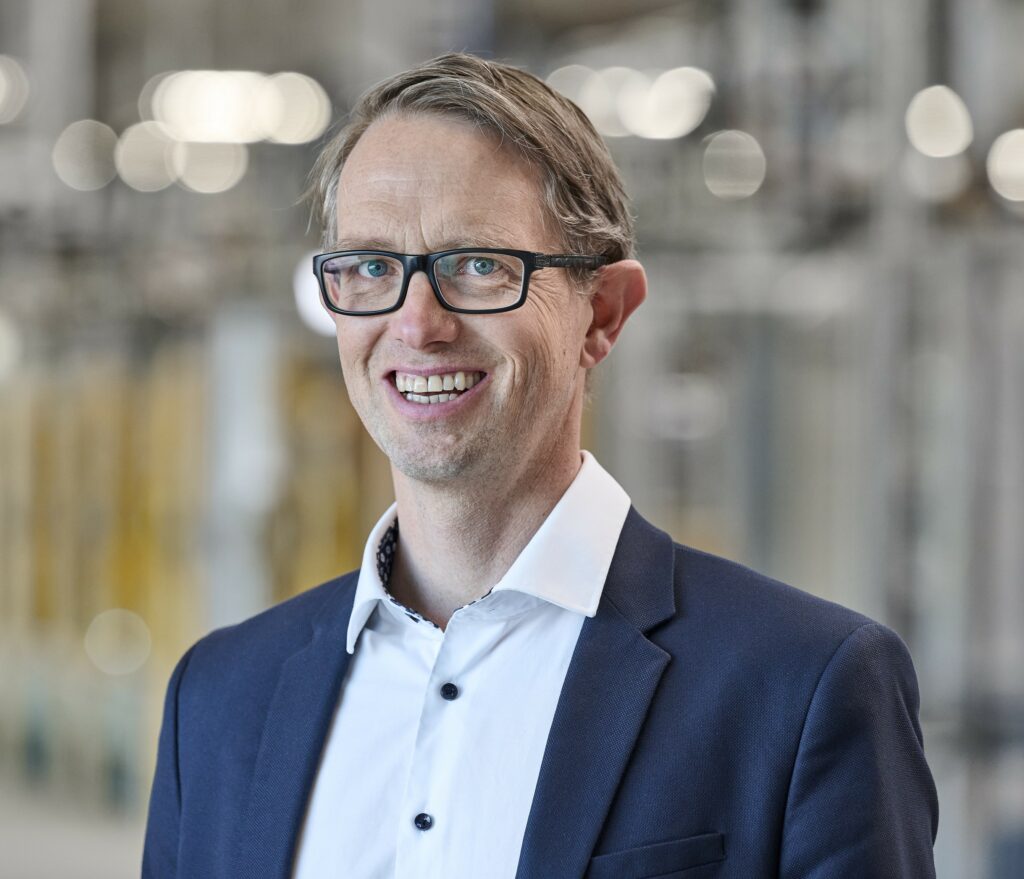
Tony Persson studied a Masters in Engineering at Lulea University of Technology in the north of Sweden from 1994 to 2000. That education included a one year stint as a blue-collar worker at a Saab Automobile press shop from 1996 to 1997. He additionally achieved an MSc Eng in Manufacturing and Process Engineering from the University of South Australia in a placement that ran from 1999 to 2000.
Following his graduation, he entered Scania and spent 14 years and 7 months working across a variety of positions, including engineer, project manager, and production manager, across different aspects of the Swedish company’s technical activities including chassis production, material handling and supplier quality assurance.
He and his family moved to Kuala Lumpur, Malaysia for three years, then lived in Germany for around three further years before returning to Sweden to rejoin Scania as head of battery production. Outside of his career in e-mobility, Persson is also an Ironman-certified fitness coach, and to date still consults on matters of personal fitness and triathlon training, as well as management and business development
Click here to read the latest issue of E-Mobility Engineering.
ONLINE PARTNERS






















